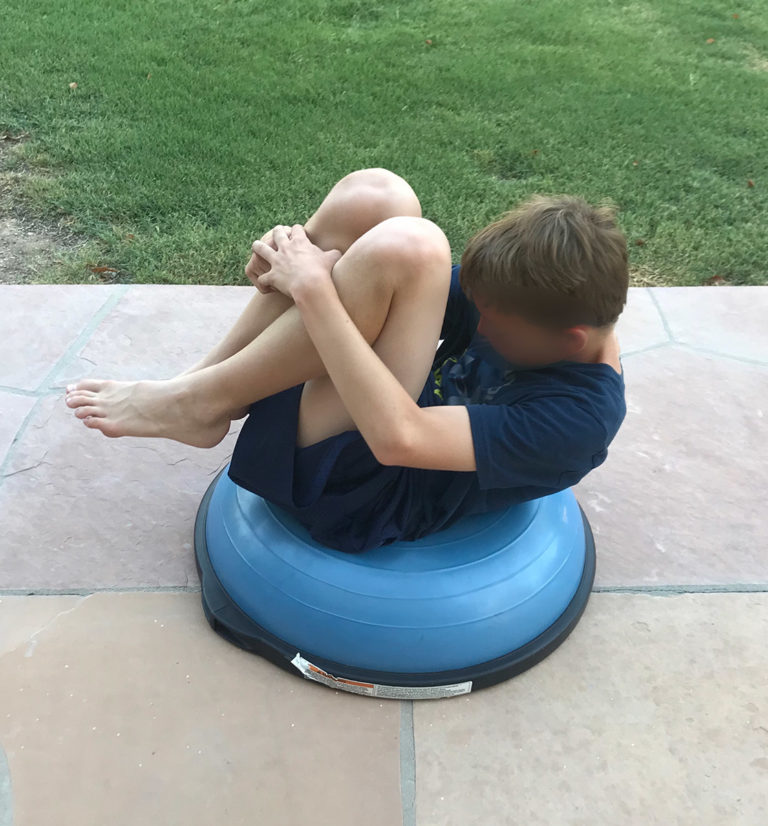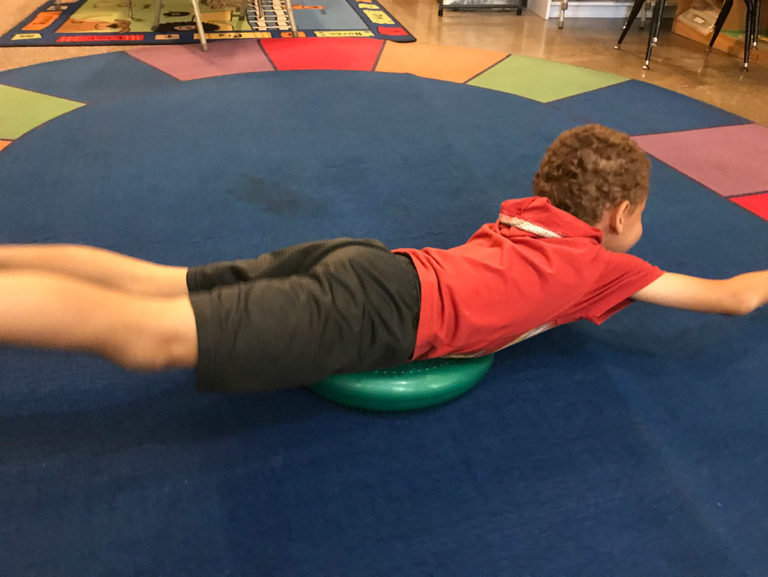

I was recently working with a client in a new school setting – a reputable Autism school in the Phoenix area. The elementary aged children were all sitting in hard, plastic chairs in a circle while the main teacher read a story. Presumably, the point of chairs for circle time was to help maintain focus and personal space, but – like any child after a few minutes in the molded plastic – they were slouching! (And focus was waning, as well). After the story was over, the group then proceeded to transition to table top activities, by moving their chairs over to the tables on the other side of the room.
I took my client and grabbed a quiet corner on the carpet. I asked him to sit criss-cross. He made it into the position, but he looked terribly uncomfortable. I gave a gentle nudge to one shoulder, and he nearly fell over. I placed him in prone (on his belly) and he actually needed help to get there. Once in this position, he didn’t know what to do with his arms, and the next few minutes were spent with me awkwardly bending his elbows underneath his little body so that he could support himself better. He finally got involved in coloring in this position, but only tolerated a few minutes.
My client is 7 years old.
Why am I telling you this? Because of core strength!
What is core strength? The CORE muscles are the deep postural muscles that make up the trunk of our bodies. They are the muscles that allow us to stay balanced and sit up straight, to reach outside of our center of gravity, to engage with our arms and not fall over. They MUST develop first before we can reach and use our arms and hands. This is known as proximal to distal development. Without intact core musculature, we cannot experience the world with our full senses or range of motion.
When you and I think about core strength, we probably conjure images of elaborate yoga poses, or doing planks or some other unpleasant exercise at the gym.
It does not have to be so for our kids (or us, by the way). We can achieve these goals in fun ways that don’t even remind us we’re working our core.
Before I go into the fun stuff, a bit of research.
This study, “Impairment in movement skills of children with autistic spectrum disorders”, states that 79 percent of children with autism have movement impairments, which can be worsened by an inactive lifestyle. Physical activity may not only decrease negative behaviors but can increase mood, improve coping skills, and enhance overall quality of life. Some anecdotal research also exists for the positive impact of movement in children with ADHD as well.
And for adults, “The real-world benefits of strengthening your core” you can find benefits that impact all areas of life!
Now that you know more, you can test your own child, or take him or her to a pediatric occupational therapist. I recommend the following for testing:
Supine Flexion – lay on back on the floor, cross arms, flex knees, and roll into a ball (I often use the cue “curl into a bug”).
Prone Extension – lay on stomach and lift head, chest, knees, and arms off the floor (only belly is contacting). Cue: “Superman!”
Curl-ups (sit-ups) and push-ups can also be assessed for core strength.


So – what’s normal? Unfortunately, there is not a lot of research. You can find some here: “Norms for Core Strength in Children”.
I agree with the author to look at quality of movement, not how long or how many. I have treated many kids over the years who have parents or other adults insist that their core is great because they can climb a small rock wall, or ride a bike. And yes – those kids do have a good starting point. But when I place them on their belly over a therapy ball, they roll out after less than a few seconds.
Don’t despair if your child demonstrates weakness in this area! Almost all play and fine motor activities (even homework) can be done in positions away from a desktop!
How to empower your child at home:
My favorite items to use in my practice when encouraging kids to get into different positions include:
Kids feel confident and empowered inside when they feel physically strong. Core strength improves attention and concentration. Keep encouraging this and maintain communication with teachers and others who are in the care of your children throughout the day! Contact Kids Empowered 4 Life for a free mini-evaluation if you feel your child may need additional help!